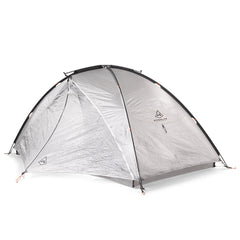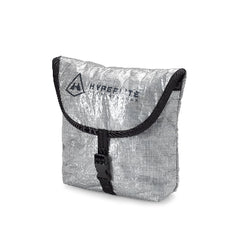Words and Photos from Scott Nechemias
From the Autumn Equinox to the Spring Equinox, adventures in the outdoors necessarily involve more darkness than light, changing the backcountry traveler's calculus for a wide variety of trip factors. Adjusting a few of your normal routines to account for the shorter days can ensure you get the most out of your trips during the darker parts of the year. The following tips are an overall look at third and fourth season backpacking, part two will address specifics about gear.
BE REALISTIC ABOUT YOUR ITINERARIES
Maybe you’re a strong hiker who can regularly throw down 25 to 30 mile days, but when the sun is going down at 4:30pm, you’re missing a good chunk of time that might make up your last 10 miles of the day. Flesh this out over a Thanksgiving weekend three night trip, and suddenly you’re 30 miles behind your itinerary in your loop back to the car, using your InREACH to text in sick on Cyber Monday, stretching your last day of food over two days in the cold. Additionally early season unpacked snow is slow going if weather hits. Be conservative with your trip planning, and plot shorter bailouts when possible, to use when things aren’t going your way.

Special Agent Utah ponders a frozen tree in the Thirty Mile Wilderness
BE OPPORTUNISTIC ABOUT NIGHT HIKING
Maybe your trip includes some Jeep road or really well maintained National Scenic Trail that is good for night hiking with a capable headlamp. By way of example, I was on the Grand Enchantment Trail in November hiking through the Superstition Mountains, a tough place to do big miles, but I knew at the end of the day I’d be on a section where it joins the Arizona Trail and is very well maintained. The sun was down by 5pm, but I tacked another seven miles onto the day after dark.
BE READY FOR FIRST LIGHT
Have your kit packed up and ready to go as soon as you have enough light to hike with! Take special care to check for small items when you pack up in the dark, like charging cables and tent stakes.

Cheese prepares to take an early season run at the Alpine Lakes Wilderness Crest
RECOGNIZE THAT CAMP TIME IS LONGER THAN HIKING TIME
Treat yourself. Maybe it’s some eBooks, podcasts, card games, a little booze (a little extra booze in my case), hot cocoa, a stove if you’re normally a cold soaker, etc. Pick a few reasonable camp comforts to bring along in recognition of the fact that camp time is now the longer part of the day.
And coffee. I pack a lot of coffee for mornings when the sun comes up late.

Ready to get rolling at first light in the White Boulder Canyon Wilderness, November
AND THAT CAMP TIME WILL BE COLDER
Your stationary layers–whether they are base layers or midlayers–and sleep system are the part of your kit that will most likely need a bump. Moving layers have a tendency to serve a much broader range of conditions due to the heat generated by the hiker.

Snowbound in the Goat Rocks Wilderness
GET USED TO MAKING CAMP IN THE DARK
If you’re not used to pitching your shelter by headlamp, give it a whirl in the backyard or local park to ensure you don’t encounter any hiccups in the field.
BONUS TIP… DIG A HOLE WHEN YOU GET TO CAMP
Without too much elaboration, this can make your morning way better when your hands are cold and nature calls.

Snowy tracks in the “Hot Loop”, Horse Mesa Wilderness
Based in Portland, Oregon, Scott takes wilderness backpacking trips primarily in the Pacific Northwest, but often other parts of the mountain west and abroad. He has a particular affinity for off-trail travel, the high desert, and the places in the world less traveled by people. You can find more of his trips at www.alongthewaypoints.com and on Instagram.























